Compounding a foldscope
 Mar 14, 2016 • 9:58 PM UTC
Mar 14, 2016 • 9:58 PM UTC Unknown Location
Unknown Location 140x Magnification
140x Magnification Plants
Plants
laksiyer
Human observer of life. https://sukshmadarshin.wordpress.com
97posts
1255comments
5locations

Here is a problem that might adorn entrance examination tests someday. It originated in a dream that I had a few days ago. I suspect this dream was inspired by the SLR hack of the foldscope .
The low power lens of the foldscope can magnify objects ~140 times. The low power of a typical compound microscope has a magnification of 40x, derived from a 4x objective lens and a 10x eyepiece. What would be the magnification of an image formed by the 140x foldscope lens and further viewed under the compound microscope?
My answer in my dream was (140 x 40) 5600x, which is way more than any compound microscope can provide. Using a higher power objective (10x) would give an additional 100x magnification over the 140x to give me a total of 14000x (140×100). It occurred to me that I not only solved the oil immersion problem, but I now potentially have a setup more powerful than most laboratories around me. You can imagine my excitement of seeing an object magnified 5000/14,000x with my compound microscope and a foldscope.
So I did the experiment to see if I was right. I used a scale micrometer to see how many pixels correspond to a particular distance at various magnifications, and then calculated effective magnification using the 140x foldscope as base. I also used Daffodil pollen to get a feel for how it would look.
Experimental setup Scale micrometer at maximum digital magnification Pixels/micron (Scale) Daffoldil pollen Foldscope with 140x lens
The low power lens of the foldscope can magnify objects ~140 times. The low power of a typical compound microscope has a magnification of 40x, derived from a 4x objective lens and a 10x eyepiece. What would be the magnification of an image formed by the 140x foldscope lens and further viewed under the compound microscope?
My answer in my dream was (140 x 40) 5600x, which is way more than any compound microscope can provide. Using a higher power objective (10x) would give an additional 100x magnification over the 140x to give me a total of 14000x (140×100). It occurred to me that I not only solved the oil immersion problem, but I now potentially have a setup more powerful than most laboratories around me. You can imagine my excitement of seeing an object magnified 5000/14,000x with my compound microscope and a foldscope.
So I did the experiment to see if I was right. I used a scale micrometer to see how many pixels correspond to a particular distance at various magnifications, and then calculated effective magnification using the 140x foldscope as base. I also used Daffodil pollen to get a feel for how it would look.
Experimental setup Scale micrometer at maximum digital magnification Pixels/micron (Scale) Daffoldil pollen Foldscope with 140x lens
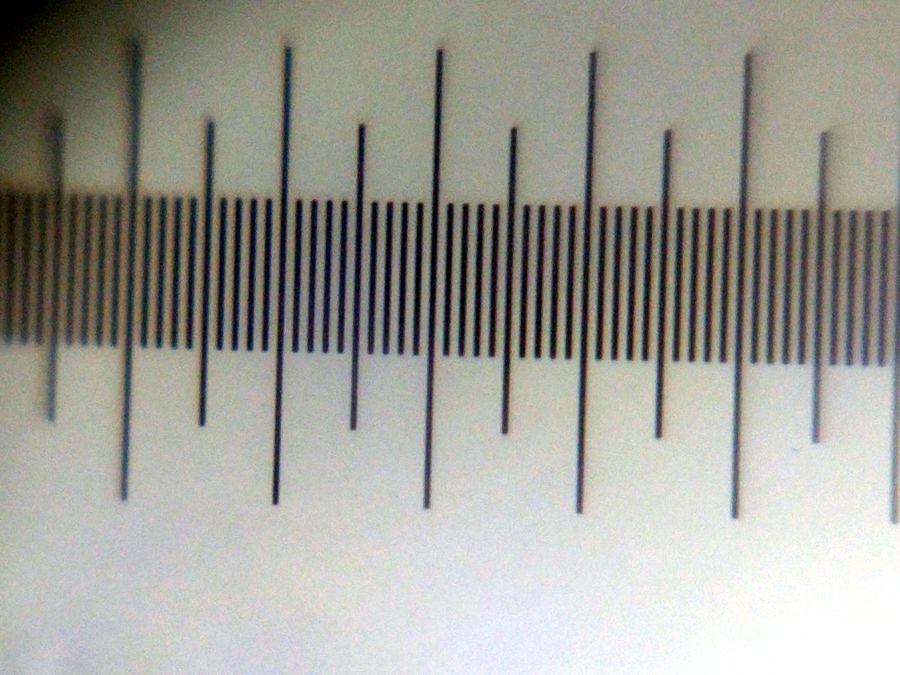
6.647 p/m
(140x)
(140x)
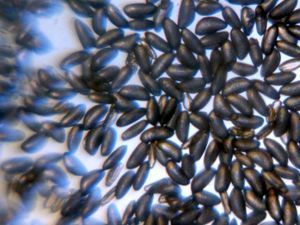
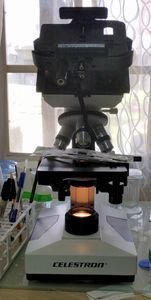
Foldscope 140x +Compound microscope (4x obj, 10x eye)
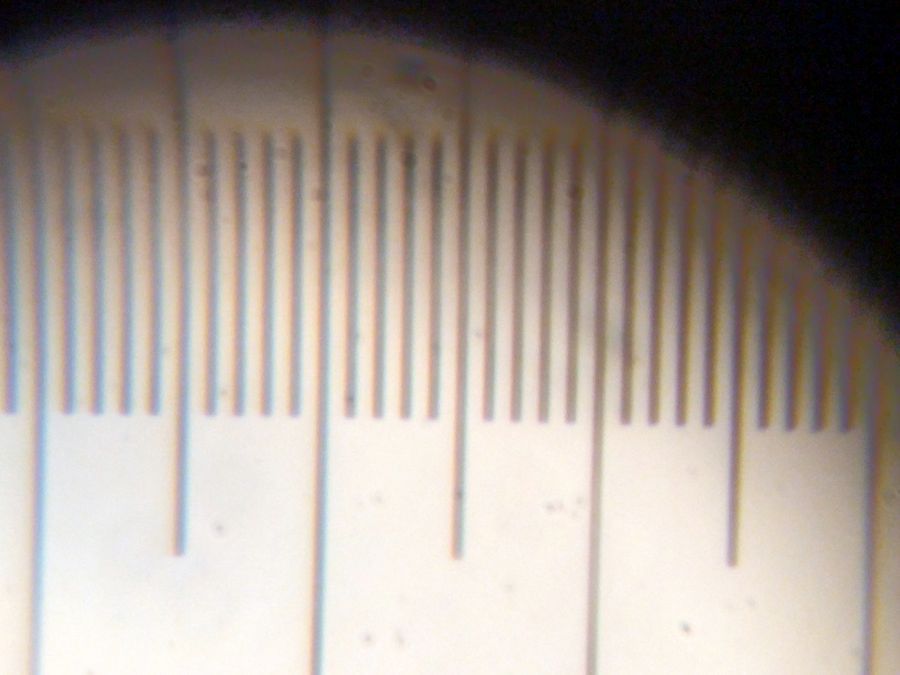
12.241 p/m (~258x)
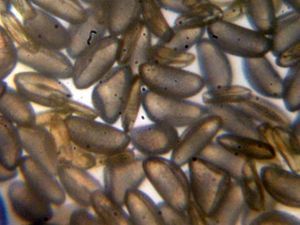
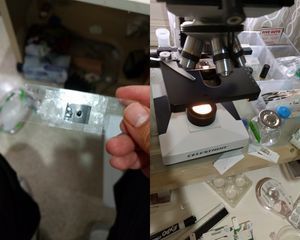
Foldscope 140x + Compound microscope (10x obj, 10x eye)
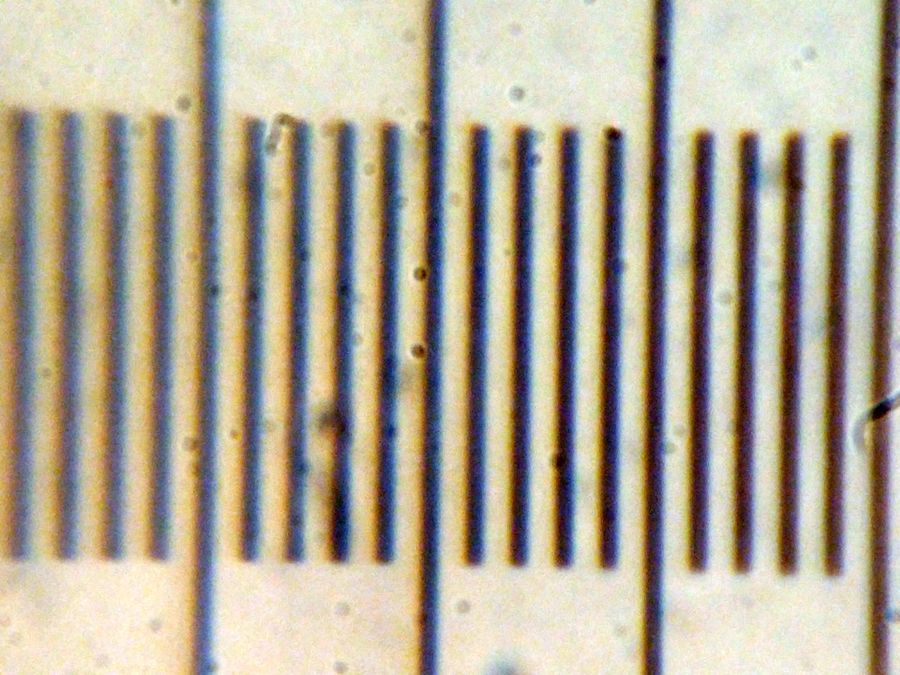
19.69 p/m
(~415x)
(~415x)

*Notes: 1) I either used the whole foldscope for the 4x objective of the compound microscope, or took the lens out and stuck it to the slide with tape when using the 10x objective of the compound microscope. I noticed that the foldscope lens has to be well pressed to the sample to make good images. 2) Pixels/micron were computed in ImageJ. 3) Scale is computed using the foldscope magnification as a base with the formula:
(Pixels/micron from Column3)/6.647*140.
This means that combining a foldscope image with 40x compound approximately doubles the magnification, and under 100x compound the magnification is approximately tripled. And so I learnt that not all dreams come true. However, I think this is telling us something about the principles of magnification and I am sure what I observed can be derived from first principles. Any takers for an interesting pen-and-paper problem?
DOI: 10.15200/winn.145806.66839 provided by The Winnower , a DIY scholarly publishing platform
(Pixels/micron from Column3)/6.647*140.
This means that combining a foldscope image with 40x compound approximately doubles the magnification, and under 100x compound the magnification is approximately tripled. And so I learnt that not all dreams come true. However, I think this is telling us something about the principles of magnification and I am sure what I observed can be derived from first principles. Any takers for an interesting pen-and-paper problem?
DOI: 10.15200/winn.145806.66839 provided by The Winnower , a DIY scholarly publishing platform
Sign in to commentNobody has commented yet... Share your thoughts with the author and start the discussion!

 0 Applause
0 Applause 0 Comments
0 Comments_300x300.jpeg)

















